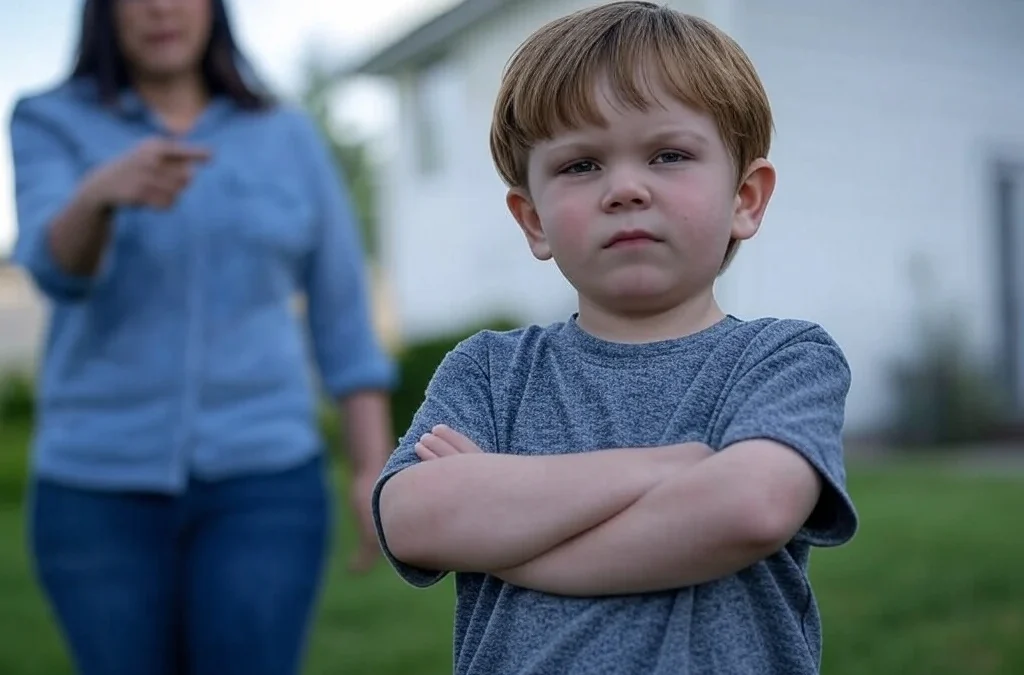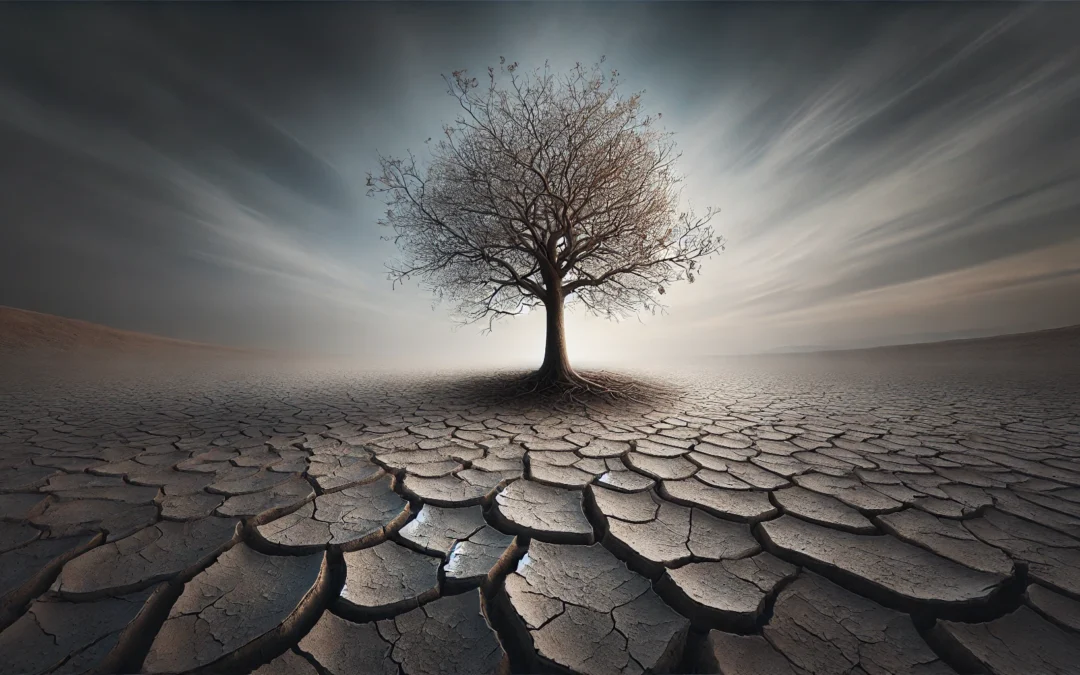Biodiversity, the variety of life on Earth, is essential for the health of our planet and our well-being. However, we’re currently facing a significant loss of species and ecosystems at an alarming rate. This loss not only affects wildlife but also disrupts the balance of our environment, impacting everything from the air we breathe to the food we eat.
In this article, we’ll explore 20 examples of biodiversity loss to help you understand the gravity of the situation. Each example will shed light on different causes and consequences of this decline, from deforestation and climate change to pollution and overfishing. By the end, you’ll have a clearer picture of why protecting biodiversity is crucial for a sustainable future. Let’s dive in and see what’s happening to our natural world.
What is Biodiversity Loss?
Biodiversity loss is the decline in the variety of life on Earth, including species, genetic, and ecosystem diversity. It’s mainly caused by human activities such as habitat destruction, climate change, pollution, over-harvesting, and the spread of invasive species. As biodiversity decreases, ecosystems become disrupted, leading to species extinction and a reduction in vital services like clean air, water, soil health, and pollination. Protecting biodiversity requires conservation efforts, habitat protection, and sustainable practices to maintain Earth’s natural balance for future generations.
Biodiversity loss not only threatens wildlife but also undermines the stability of ecosystems that humans rely on for essential resources and services. The loss of species can disrupt food chains, weaken natural disaster defenses like flood control, and reduce nature’s ability to regulate the climate. For example, the decline of pollinators like bees and butterflies jeopardizes food production, while deforestation contributes to global warming by reducing the Earth’s capacity to absorb carbon dioxide.
Additionally, biodiversity loss diminishes the potential for scientific discovery, such as new medicines derived from plants and animals. Every lost species may represent the loss of critical knowledge and resources that could benefit human health, agriculture, and industry.
Key Examples of Biodiversity Loss
These are some of the world’s most impactful examples illustrating the core of biodiversity loss:
1. Deforestation in the Amazon
The Amazon rainforest, often called the “lungs of the Earth,” is being cleared at an alarming pace. Large areas are cut down to make way for agriculture, cattle ranching, and logging. This destruction results in the loss of habitat for millions of species, including jaguars, sloths, and countless types of birds, insects, and plants. When trees are removed, entire ecosystems collapse, disrupting food chains and reducing biodiversity. Indigenous communities that rely on these forests also suffer, as their homes and resources are destroyed. This is one of the most significant examples of how habitat loss drives biodiversity decline.
2. Coral Reef Bleaching
Coral reefs, known as the “rainforests of the sea,” are under immense threat from rising ocean temperatures. When the water gets too warm, corals expel the algae living within their tissues, a process called coral bleaching. Without these algae, corals lose their color and are left vulnerable to disease and death. Coral reefs support about 25% of all marine life, providing food, shelter, and breeding grounds for species like clownfish, sea turtles, and sharks. When reefs die, the marine life that depends on them also suffers, leading to a dramatic loss in ocean biodiversity.
3. Poaching of Elephants for Ivory
Elephant populations in Africa and Asia are being decimated by illegal poaching for their tusks. The ivory trade has led to a sharp decline in elephant numbers, with many populations on the brink of extinction. Elephants are a keystone species, meaning their presence is crucial to maintaining the structure of their ecosystems. They help shape the environment by uprooting trees, creating open spaces for new plants to grow, and dispersing seeds through their dung. As elephant numbers dwindle, their ecosystems face long-term consequences, including the loss of plant species and the animals that rely on them.
4. Overfishing in the Oceans
Global fish stocks are being depleted at an unsustainable rate due to overfishing. Fish like tuna, cod, and salmon are harvested faster than they can reproduce, leading to sharp declines in their populations. This disrupts entire marine food chains, as predators that rely on these fish, such as sharks and seabirds, struggle to find food. Overfishing also affects the balance of ecosystems, sometimes leading to the overpopulation of smaller fish or plankton. The loss of biodiversity in the oceans reduces their resilience to environmental changes, making marine ecosystems more vulnerable to collapse.
5. Habitat Loss from Urban Sprawl
As cities grow, natural landscapes are transformed into urban environments, displacing countless species in the process. Forests, wetlands, and grasslands are replaced by buildings, roads, and other infrastructure. This fragmentation of habitats isolates wildlife, making it difficult for animals to find food, water, and mates. For example, species like foxes, deer, and birds are often forced into smaller and less suitable habitats, increasing their risk of extinction. Urban sprawl is one of the leading causes of biodiversity loss in many parts of the world, especially in rapidly developing countries.
6. Climate Change Impact on Polar Bears
Polar bears are facing a dire future due to climate change. As global temperatures rise, the Arctic sea ice that polar bears rely on for hunting is melting. Polar bears use the ice to catch seals, their primary food source. Without enough ice, they must swim long distances or venture onto land, where food is scarce. This results in starvation and lower reproductive rates. The decline of polar bear populations is a stark reminder of how climate change can drastically affect species that are highly specialized for certain environments.
7. Introduction of Invasive Species
Invasive species are non-native plants, animals, or microbes that, when introduced to a new environment, outcompete the local species for resources. A classic example is the brown tree snake in Guam, which was accidentally introduced and has since devastated the island’s native bird populations. Invasive species often have no natural predators in their new habitats, allowing them to multiply rapidly and push native species to extinction. This causes a ripple effect throughout ecosystems, altering food webs, reducing biodiversity, and sometimes changing entire landscapes.
8. Pollution in Rivers and Lakes
Pollution from agricultural runoff, industrial waste, and plastic debris has severe impacts on freshwater ecosystems. Rivers and lakes are often contaminated with harmful chemicals like pesticides, heavy metals, and fertilizers, which kill fish and other aquatic species. For example, excess nitrogen and phosphorus from fertilizers lead to algae blooms, which deplete oxygen levels in the water, creating “dead zones” where no life can survive. This loss of biodiversity affects not only aquatic species but also birds, mammals, and humans who rely on clean water for drinking, irrigation, and recreation.
9. Agricultural Expansion in Grasslands
Grasslands, which are home to a rich variety of species, are being rapidly converted into farmland. This conversion often involves plowing over native grasses to grow crops or graze livestock, destroying habitats for countless species, including insects, birds, and small mammals. The unique balance of these ecosystems is disrupted, leading to a sharp decline in biodiversity. Insects that pollinate plants, small mammals that aerate the soil, and birds that control pest populations all suffer from the loss of their habitats, causing cascading effects throughout the ecosystem.
10. Monoculture Farming Practices
Monoculture farming, where only one type of crop is grown year after year, significantly reduces biodiversity. By planting the same crop repeatedly, the soil becomes depleted of essential nutrients, weakening its ability to support a variety of life forms. This lack of plant diversity also affects insects, birds, and other wildlife that rely on different plants for food and shelter. Moreover, monoculture farming is more vulnerable to pest outbreaks, as there are fewer natural predators to keep pest populations in check. This often leads to an increased use of pesticides, further harming biodiversity.
11. Forest Fires
While some forest fires occur naturally and are part of the ecosystem’s life cycle, many are caused by human activities such as land clearing, campfires, or discarded cigarettes. These uncontrolled fires can devastate vast areas of forest, wiping out habitats and killing animals that cannot escape. Species that are slow to recover or cannot adapt to the changes caused by the fire are often lost. In addition, the long-term impact of frequent or severe fires alters the structure of forests, making them less capable of supporting diverse plant and animal life.
12. Wetland Drainage for Development
Wetlands, which are among the most productive ecosystems on Earth, are often drained to make space for agriculture, housing, and industrial development. These ecosystems are home to a wide array of species, including amphibians, birds, fish, and insects. Draining wetlands destroys the unique habitats they provide, causing many species to decline or disappear altogether. Additionally, wetlands serve vital functions like water purification, flood control, and carbon storage, and their destruction weakens these natural services, further impacting biodiversity.
13. Decline of Pollinators
Pollinators like bees, butterflies, and birds are crucial for the reproduction of many plants, including crops that humans rely on for food. However, pollinator populations are declining due to pesticide use, habitat loss, and diseases. As pollinators disappear, the plants that depend on them for reproduction also struggle, leading to a reduction in plant diversity. This, in turn, affects the entire ecosystem, as many animals rely on these plants for food. The decline in pollinators poses a serious threat not only to biodiversity but also to global food security.
14. Marine Plastics
The oceans are becoming choked with plastic waste, which has devastating consequences for marine life. Sea turtles, seabirds, and marine mammals often mistake plastic for food, ingesting it or becoming entangled in it. This can lead to injuries, starvation, and death. Ingested plastic can block digestive tracts or release harmful chemicals into the bodies of animals. Marine plastics also break down into microplastics, which are ingested by fish and other small organisms, further polluting the food chain and impacting biodiversity at every level.
15. Overuse of Freshwater Resources
Excessive extraction of freshwater for agriculture, industry, and human consumption is putting immense pressure on rivers, lakes, and aquifers. When too much water is taken from these sources, water levels drop, reducing the size of aquatic habitats. This threatens fish, amphibians, and plants that rely on freshwater ecosystems to survive. Reduced water levels can also lead to higher concentrations of pollutants, making the environment even more hostile for the remaining species. The overuse of freshwater resources contributes to the decline of aquatic biodiversity worldwide.
16. Mining Activities
Mining for minerals and metals involves clearing vast areas of land, often in pristine natural environments. The process of extracting resources from the Earth not only destroys habitats directly but also results in soil erosion, water contamination, and air pollution. Toxic chemicals used in mining operations can seep into nearby rivers and streams, poisoning aquatic life and causing long-term damage to ecosystems. In many cases, mining leaves large areas barren, with little chance for ecosystems to recover, leading to the permanent loss of biodiversity in those regions.
17. Air Pollution
Air pollution, primarily from vehicles, factories, and power plants, releases harmful substances like sulfur dioxide and nitrogen oxides into the atmosphere. These pollutants damage plants by blocking sunlight and disrupting photosynthesis. Animals suffer as well, as their food sources dwindle or become contaminated. Acid rain, caused by air pollution, damages forests by leaching nutrients from the soil and acidifying freshwater lakes and rivers. This harms trees, fish, and other aquatic life, leading to significant biodiversity loss.
18. Climate-Induced Range Shifts
As global temperatures rise, many species are forced to migrate to cooler areas or higher altitudes to survive. This shift can disrupt existing ecosystems, as new species may outcompete local wildlife for resources. Some species can’t move quickly enough or find suitable new habitats, leading to population declines or extinction. This phenomenon is particularly evident in species with specialized habitats, such as mountain animals or those living in polar regions, where suitable environments are disappearing.
19. Ocean Acidification
Ocean acidification occurs when carbon dioxide (CO2) from the atmosphere dissolves in seawater, lowering the water’s pH and making it more acidic. This change has devastating effects on marine life, especially species like shellfish, corals, and certain types of plankton that rely on calcium carbonate to build their shells and skeletons. As the ocean becomes more acidic, their ability to form these structures weakens, causing population declines and threatening entire marine ecosystems. Coral reefs, which host immense biodiversity, are particularly vulnerable.
20. Loss of Genetic Diversity
Human activities such as habitat destruction, overhunting, and pollution reduce the genetic diversity within species. When a population becomes smaller and isolated, it has fewer genetic variations. This makes species more vulnerable to diseases, environmental changes, and inbreeding, which can weaken their ability to survive and reproduce. For example, endangered species often suffer from low genetic diversity, making recovery difficult even with conservation efforts. A loss of genetic diversity reduces the resilience of ecosystems as a whole.
Causes of Biodiversity Loss
One of the primary causes of biodiversity loss is habitat destruction. Human activities like deforestation, urbanization, and agriculture expansion lead to the fragmentation and complete elimination of natural habitats. Forests, wetlands, and grasslands are transformed into urban areas or agricultural fields, reducing the space available for wildlife. As habitats shrink and become fragmented, many species lose their homes, food sources, and breeding grounds, leading to population declines and, eventually, extinction. For example, the Amazon Rainforest, often referred to as the “lungs of the Earth,” is experiencing alarming rates of deforestation, putting countless species at risk.
Another significant cause of biodiversity loss is pollution. Chemicals from pesticides, industrial waste, and plastic pollution severely impact ecosystems and species. Water bodies, in particular, suffer from pollution through runoff containing fertilizers and chemicals, leading to phenomena like algal blooms that deplete oxygen in the water, killing fish and other aquatic life. Air pollution also affects biodiversity by altering habitats and causing respiratory issues in animals. Noise pollution, primarily from urban areas and transportation, disrupts communication and breeding patterns in wildlife.
Impacts of Biodiversity Loss
The impacts of biodiversity loss are far-reaching and affect not just the natural world but also human life. One major impact is the disruption of ecosystem services, which are the benefits that humans derive from functioning ecosystems. These services include pollination of crops, purification of water and air, regulation of climate, and decomposition of waste. For example, bees and other pollinators are crucial for the production of many fruits and vegetables; their decline can lead to reduced crop yields and higher food prices.
Biodiversity loss also impacts human health. Many medications are derived from plant and animal sources, and the loss of species can limit the discovery of new medicines. Additionally, ecosystems with reduced biodiversity are less resilient to diseases, which can lead to the spread of pathogens to humans. An example of this is the rise in zoonotic diseases – those transmitted from animals to humans such as COVID-19, which is linked to wildlife trade and habitat encroachment.
In conclusion, understanding the causes and impacts of biodiversity loss is crucial for developing strategies to protect our planet’s biodiversity. Addressing habitat destruction, pollution, and other human activities can help mitigate the loss of species and ensure the continued provision of essential ecosystem services. Similarly, recognizing the impact on human health can drive policy changes and conservation efforts aimed at preserving biodiversity for future generations.
The Economic Impact of Biodiversity Loss
Biodiversity loss does not only affect the environment. It has significant economic repercussions too. Various industries, like agriculture, fisheries, and tourism, rely heavily on a diverse ecosystem. Loss in biodiversity can lead to a decline in crop yields. For instance, many crops depend on pollinators like bees, and a decrease in bee populations can severely impact food production. This, in turn, affects food prices and food security.
Fisheries are also at risk. Overfishing and habitat destruction can lead to the collapse of fish populations. This results in loss of livelihoods for communities dependent on fishing. Tourism, particularly eco-tourism, suffers as well. Tourists are less likely to visit areas that have lost their natural beauty and wildlife. This can have a ripple effect on local economies that rely on tourism dollars.
Beyond direct economic impacts, there’s the cost of ecosystem services. These services include water purification, flood control, and carbon sequestration. When ecosystems are degraded, the cost of replacing these services falls on humans. It can be exorbitantly expensive and, in some cases, impossible to replicate what nature does for free.
Conservation Efforts and Success Stories
Despite the challenges, there are success stories in biodiversity conservation. Numerous initiatives around the world have made significant strides in protecting and restoring biodiversity. For example, the creation of marine protected areas (MPAs) has been effective in replenishing fish stocks. MPAs provide a safe haven for marine life, allowing ecosystems to recover and thrive.
Reforestation projects are another success. By planting trees and restoring forests, these initiatives help to rebuild habitats and sequester carbon. One notable project is the Great Green Wall in Africa. This initiative aims to combat desertification and restore degraded lands across the Sahel region. It’s a colossal effort, but it holds promise for reversing biodiversity loss in the area.
Community-driven conservation is also making a difference. Indigenous and local communities often have a deep connection to their natural environment. By involving them in conservation efforts, projects can benefit from their traditional knowledge and stewardship. This approach not only helps biodiversity but also supports the rights and livelihoods of these communities.
These success stories show that while biodiversity loss is a grave issue, it is not insurmountable. With concerted effort and collaboration, we can make a positive impact and preserve the natural world for future generations.
Read also: Top 20 Ethical Behavior Examples
The Most Popular on BitGlint

Top 100 Personal Items List
Everyone uses personal items in their daily lives, often without even thinking about them. From the moment you wake up...

30 Defiance Examples & Meaning
Defiance is something most people experience at some point in life. You feel it when you say no to something that...

Top 30 Desire Examples & Definition
Desire is a powerful force that drives much of human behavior, shaping our goals, dreams, and everyday decisions. It's...

100 Non-Digital Things List
In everyday life, there are still hundreds of objects, tools, and materials that exist completely outside the digital...

30 Examples of Attention & Definition
Have you ever noticed how a catchy tune can grab your attention, even when you're busy doing something else? It's...

60 Cultural Traditions Examples & Definition
Cultural traditions are part of daily life - whether people realize it or not. They shape what we eat, how we...

Top 30 Intimacy Examples & Meaning
Intimacy goes beyond physical touch or romantic moments. It’s about closeness, trust, and connection. In everyday...
Get Inspired with BitGlint

